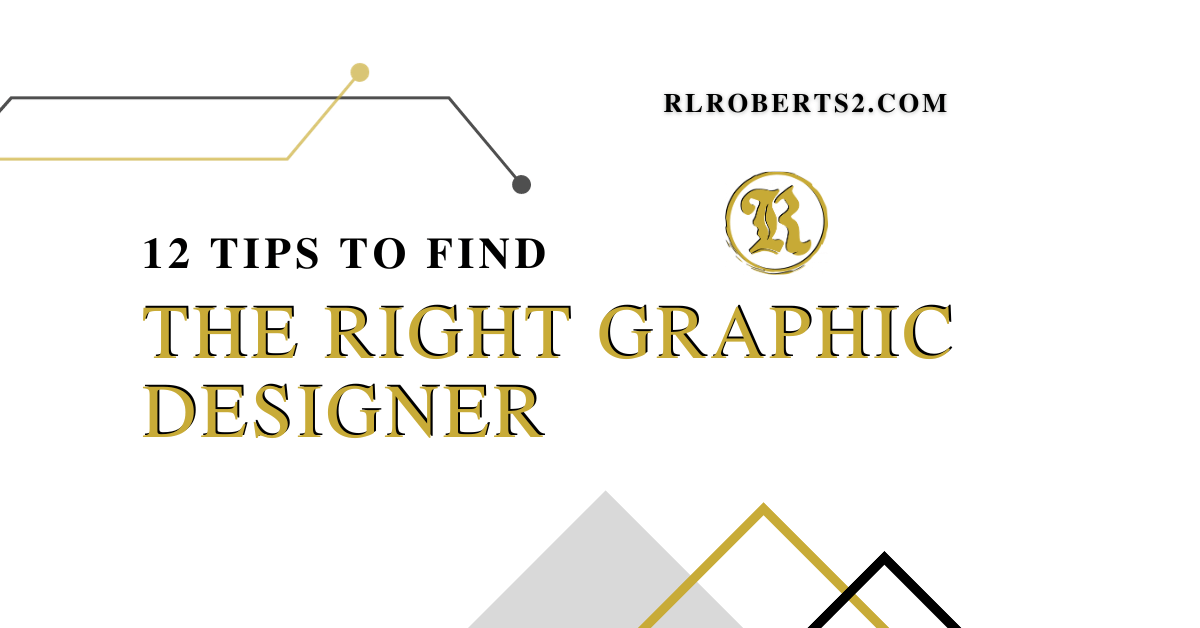Are you in need of quality design who can bring your creative vision to life but you’re not sure how to find the right graphic designer? Look no further! In this 12 tip guide, we will unlock the secrets to finding the perfect creative partner for all your design needs. Whether you’re a small business owner, a marketer, author, or an aspiring entrepreneur, hiring a graphic designer is essential in today’s visually-driven world.

With so many options out there, how do you know which graphic designer is the right fit for your project? That’s where this list of tips will come in. We’ll walk you through the key factors to consider when hiring a graphic designer, from their portfolio and design style to their communication skills and pricing structure.
By the end of this guide, you’ll be equipped with the knowledge and insights needed to make an informed decision and find the graphic designer who will transform your ideas into stunning visuals. Get ready to unlock the secrets to finding your perfect creative partner!
Here are some steps to help you find the right graphic designer:
- Define Your Project Scope: Before you start searching for a graphic designer, it’s essential to have a clear understanding of your project’s scope. What is the goal of the project? What are the specific design needs? Having a well-defined project brief will help you communicate your requirements to potential designers.
- Scope Change Process: Establish a process for handling scope changes. When changes are proposed, they should go through a formal review and approval process to avoid scope creep.
- Communication Plan: Ensure that the project scope is effectively communicated to the project team and stakeholders to maintain a shared understanding of what the project entails.
- Determine Your Budget: Knowing your budget is important when looking for a graphic designer. Different designers have different pricing structures, so understanding what you can afford will help you narrow down your options.
- Is it funded? This is a simple, yet crucial bit of information.
- Look for Specialization: Graphic designers often have specific areas of expertise, such as branding, web design, print materials, or digital marketing. Look for designers whose skills align with your project’s needs.
- There are many designers who focus on logos or websites solely. Their specific area of expertise should be communicated across.
- Review Portfolios: When evaluating graphic designers, take the time to review their portfolios. This will give you insight into their style, creativity, and the quality of their work. Look for projects that are similar to yours in terms of style and complexity.
- Ask for Recommendations: Seek recommendations from friends, colleagues, or industry contacts who have worked with graphic designers in the past. Personal referrals can be a valuable way to find a reliable designer.
- A good designer will leave a lasting impression. Quality work follows a designer around everywhere.
- Social Media and Online Communities: Platforms like LinkedIn, Twitter, and design-focused online communities can be a good source for discovering talented graphic designers. You can also join design-related forums and groups to ask for recommendations.
- Be careful for spam. Facebook and social media bots will send messages about random services.
- Conduct Interviews: Once you’ve identified a few potential designers, conduct interviews to assess their suitability for your project. Ask about their experience, design process, and how they handle revisions and feedback.
- Are they asking the right questions? Or any at all?
- Check References: Request references from previous clients or employers to get a sense of a designer’s reliability, professionalism, and work quality.
- Solid references should come from past projects and professional affiliations.
- Discuss Project Details: During the interview or consultation, discuss project details, timelines, and expectations. Make sure the designer understands your vision and can deliver on your project’s requirements.
- Details are what brings a successful – or unsuccessful – project together.
- Agree on Terms and Contracts: Clearly define the terms of the project, including the scope, deliverables, deadlines, and payment structure. It’s essential to have a written contract in place to protect both parties.
- Start with a Small Project: If you’re unsure about a designer’s abilities, consider starting with a smaller project to evaluate their performance before committing to a larger one.
- Communication and Collaboration: Effective communication is key to a successful design project. Ensure you and the designer can work well together and exchange feedback constructively.

Collaborating with a graphic designer can lead to some of the most visually stunning and memorable content. Here are some tips to help you collaborate effectively with your graphic designer:
– Establish clear communication channels and expectations from the outset.
– Provide clear feedback and direction throughout the project.
– Trust your designer’s expertise and give them creative freedom while ensuring they stay within the project’s scope of work.
– Be open to new ideas and suggestions from your designer.
– Address any concerns or issues promptly to avoid delays or misunderstandings.
Finding the right graphic designer may take some time, but the effort is worth it to ensure your project’s success. By following these steps, you can identify a designer who aligns with your needs and vision.
Meet the team at R.L. Roberts II Design, LLC. Since 2018, we’ve been committed to effective marketing through quality design. When other print shops and design studios cut corners and are set up for quantity over quality, we take the time needed with a quality control approach.

